

Assam, located in northeastern India, is a state of breathtaking natural beauty and cultural richness. Known for its sprawling tea gardens, the mighty Brahmaputra River, and the one-horned rhinoceros, Assam offers a unique blend of natural wonders and cultural heritage. From the ancient temples of Sivasagar to the wildlife sanctuaries of Kaziranga, the state presents a fascinating mix of history, nature, and vibrant traditions.

Assam stands as one of India's most historically rich regions, with a civilization dating back to at least the 4th century BC. The state's ancient names - Pragjyotishpura (the city of eastern light) and Kamarupa (the land where love regained its form) - reflect its significant place in Indian mythology and history.
The earliest historical mentions of Assam appear in the Mahabharata and other ancient texts, which refer to the kingdom of Pragjyotisha. The region was ruled by the powerful Varman dynasty from the 4th to the 7th century AD, followed by the Pala dynasty until the 12th century. This period saw the flourishing of art, culture, and the Tantric traditions that still characterize Assam today.
The medieval period witnessed the rise of the Ahom kingdom, which ruled Assam for nearly 600 years from 1228 to 1826. The Ahoms, originally from present-day Myanmar, successfully resisted Mughal expansion into the region, maintaining Assam's independence while creating a sophisticated administrative system and cultural synthesis that continues to influence Assamese identity.
Assam's strategic location made it a crossroads of cultures, with influences from Southeast Asia, Tibet, and mainland India creating a unique cultural mosaic. The state's isolation by geography preserved many ancient traditions while allowing for the development of distinctive art forms, literature, and social practices.
The British annexation of Assam in 1826 after the Treaty of Yandabo marked a new era. The discovery of tea plants in the region led to the establishment of tea plantations that would become world-famous. The British period also saw the development of the oil industry in Assam, with the first oil well in Asia drilled at Digboi in 1867.
Post-independence, Assam became a state of the Indian Union in 1950. The state has since navigated challenges of identity, migration, and development while preserving its rich cultural heritage. The Assam Movement (1979-1985) was a significant chapter in the state's history, leading to the Assam Accord which sought to address issues of illegal immigration.
Today, Assam takes pride in its diverse heritage, from the ancient Kamakhya Temple to the vibrant Bihu festival, from its world-renowned tea gardens to its unique wildlife. The state's history of resilience, cultural synthesis, and natural wealth forms the foundation of its contemporary identity as one of India's most distinctive regions.
Assam is known for its rich cultural heritage, which is reflected in its linguistic diversity. The state's language landscape showcases its unique history as a meeting point of Indo-Aryan, Tibeto-Burman, and Tai linguistic families.
Assamese is the official language of Assam and is spoken by the majority of the population. It belongs to the Eastern Indo-Aryan language group and has a rich literary tradition dating back to the 14th century. The Assamese script is derived from the ancient Brahmi script and shares similarities with Bengali and Odia scripts.
The languages of Assam reflect its unique position as a cultural crossroads between South Asia and Southeast Asia. While Assamese remains the heart of state identity, the presence of Bodo, Bengali, numerous tribal languages, English, and Hindi creates a rich linguistic tapestry that mirrors Assam's history as a meeting point of diverse cultures.
Assam's festivals reflect its agricultural roots, diverse communities, and deep connection with nature. From the vibrant Bihu celebrations that mark the agricultural cycle to religious festivals that showcase the state's spiritual diversity, Assamese festivals are colorful, joyful, and deeply meaningful.
Bihu is the most important and widely celebrated festival in Assam, comprising three primary festivals that correspond to the agricultural cycle. These festivals - Rongali or Bohag Bihu, Kongali or Kati Bihu, and Bhogali or Magh Bihu - celebrate different phases of farming and are marked by distinctive rituals, dances, and feasts.
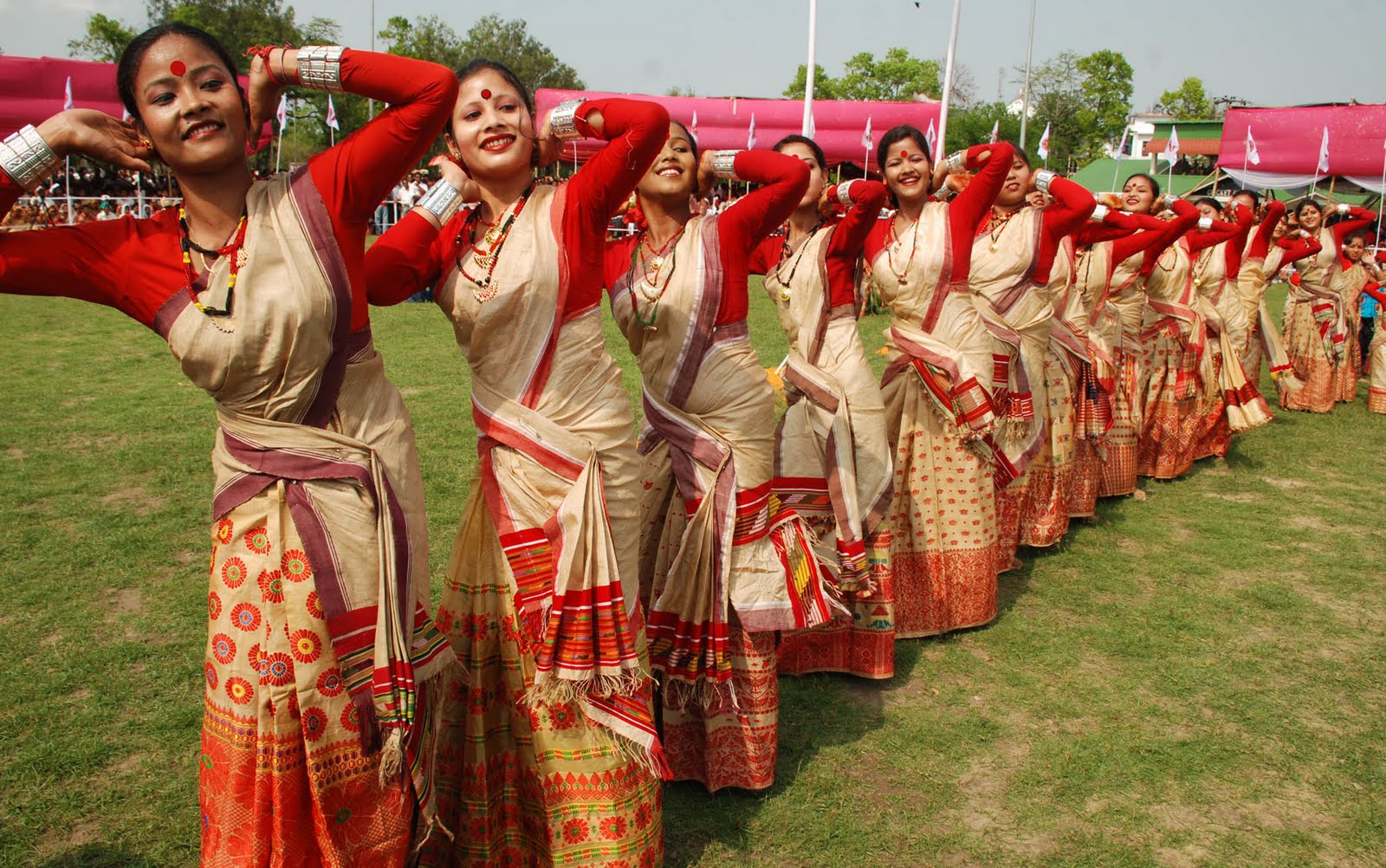
The Bihu festival is more than just a celebration; it is the heartbeat of Assamese culture that connects people to their agrarian roots. With its vibrant dances, melodious songs, and community feasts, Bihu perfectly embodies Assam's spirit - joyful, inclusive, and deeply connected to the rhythms of nature.
The Ambubachi Mela is one of the most important religious events in Assam, attracting thousands of pilgrims from around the world. Held annually at the Kamakhya Temple in Guwahati, this festival celebrates the annual menstruation of the goddess Kamakhya, a unique aspect of Tantric worship that distinguishes it from other Hindu festivals.
The Kamakhya Temple, one of the 51 Shakti Peethas, is believed to be the place where the womb and genitals of the goddess Sati fell. During the Ambubachi Mela, the temple remains closed for three days as it is believed the goddess undergoes her annual menstrual cycle. The reopening of the temple marks the end of this period, and devotees receive pieces of cloth soaked in what's believed to be the menstrual fluid as prasad (blessed offering).
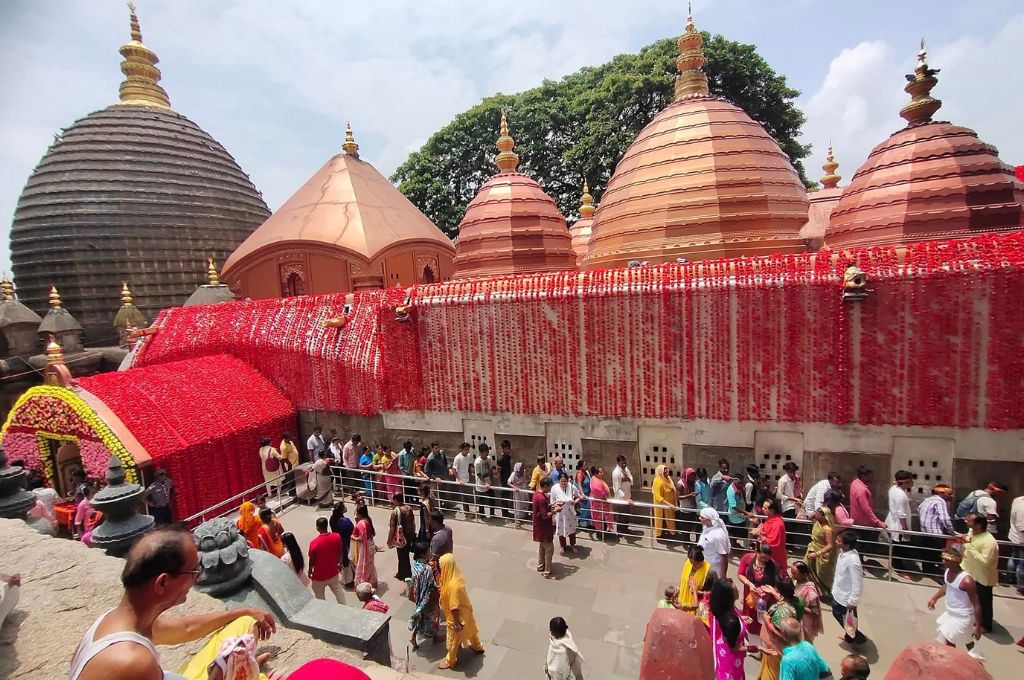
The Ambubachi Mela is a testament to Assam's deep-rooted Tantric traditions and its significance as a center of goddess worship. The devotion displayed during this festival reflects the enduring spiritual practices of the region and its connection to ancient Indian religious traditions that celebrate the feminine divine.
Durga Puja is one of the most elaborately celebrated festivals in Assam, particularly in urban areas with significant Bengali and Hindu populations. While similar to Durga Puja celebrations in West Bengal, Assamese Durga Puja has its own distinctive characteristics and local flavors.
Durga Puja in Assam represents the state's cultural diversity and its ability to incorporate pan-Indian traditions while maintaining local distinctiveness. The festival's grandeur and community spirit make it one of the most anticipated events in the Assamese calendar, showcasing both religious devotion and artistic expression.
The festivals of Assam showcase its incredible cultural diversity, where indigenous traditions, Hindu celebrations, and Christian observances coexist and often influence each other. This harmonious blend of celebrations reflects the spirit of Assam - joyful, inclusive, and deeply rooted in both nature and diverse cultural heritage.

Assam, the largest and most accessible state in Northeast India, is known for its tea gardens, wildlife sanctuaries, and rich cultural heritage. Each city in Assam has its own distinct character, contributing to the state's reputation as the "Gateway to Northeast India." From the bustling urban center of Guwahati to the historic capital of Sivasagar, Assam's cities offer a fascinating blend of modernity and tradition.
Guwahati, formerly known as Pragjyotishpura, is the largest city in Assam and the entire Northeast region. Located on the banks of the mighty Brahmaputra River, it serves as the commercial, educational, and cultural hub of the state. As the gateway to Northeast India, Guwahati combines ancient heritage with rapid urban development.
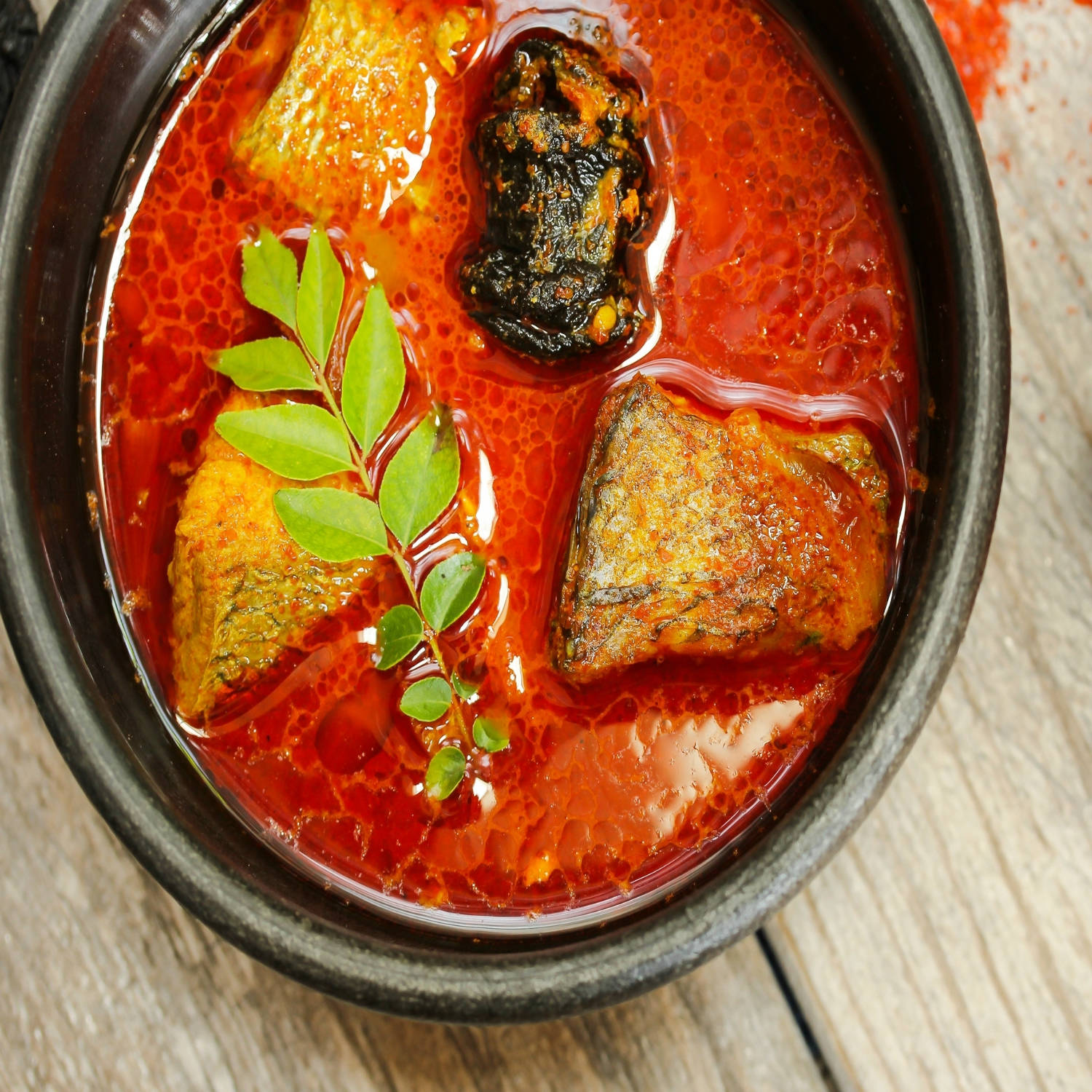

The Kamakhya Temple is one of the most important Hindu temples in India and the center of Tantric worship. Perched on the Nilachal Hill overlooking the Brahmaputra River, this temple is one of the 51 Shakti Peethas where, according to mythology, the reproductive organ of the goddess Sati fell. The temple's unique architecture and spiritual significance attract millions of pilgrims annually, especially during the Ambubachi Mela.
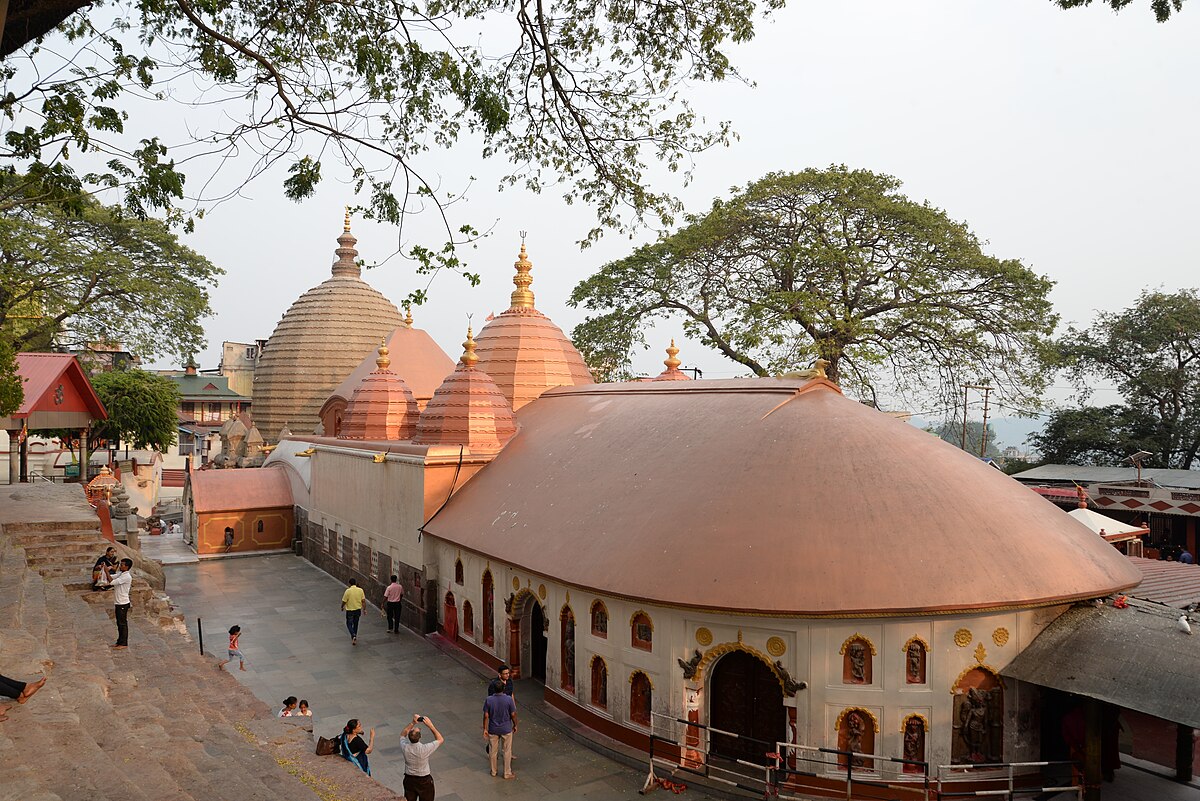
The current temple structure dates back to the 8th-9th century, with renovations and additions made by various rulers through history. Unlike typical Hindu temples, Kamakhya Temple doesn't have the customary idol of the deity. Instead, it houses a natural stone vulva-shaped structure (yoni) that is worshipped as the goddess. The temple complex includes several other shrines dedicated to different forms of the Mother Goddess.
Today, the Kamakhya Temple is not only a place of worship but also a major tourist attraction. Its picturesque setting, historical significance, and unique religious practices make it a must-visit destination in Guwahati, representing the rich spiritual heritage of Assam.

Umananda Temple is located on Peacock Island in the middle of the Brahmaputra River, making it one of the most uniquely situated temples in India. Dedicated to Lord Shiva, the temple was built in 1694 by the Ahom King Gadadhar Singha. The name 'Umananda' comes from the Sanskrit words for Shiva (Uma) and bliss (ananda).
Accessible only by boat, the temple offers a serene spiritual experience away from the city's hustle. The island is also home to the endangered golden langur, adding to its natural appeal. The temple structure features typical Ahom architecture with intricate stone carvings depicting various Hindu deities and mythological scenes.
Visiting Umananda Temple involves a scenic boat ride across the Brahmaputra, providing panoramic views of Guwahati and the surrounding hills. The temple is particularly crowded during Shiva-related festivals like Maha Shivaratri, when devotees throng the island to offer prayers.
In conclusion, Umananda Temple represents both the spiritual heritage and natural beauty of Assam. Its unique river-island location and historical significance make it an essential part of the Guwahati experience, showcasing the harmonious coexistence of nature and devotion in Assamese culture.
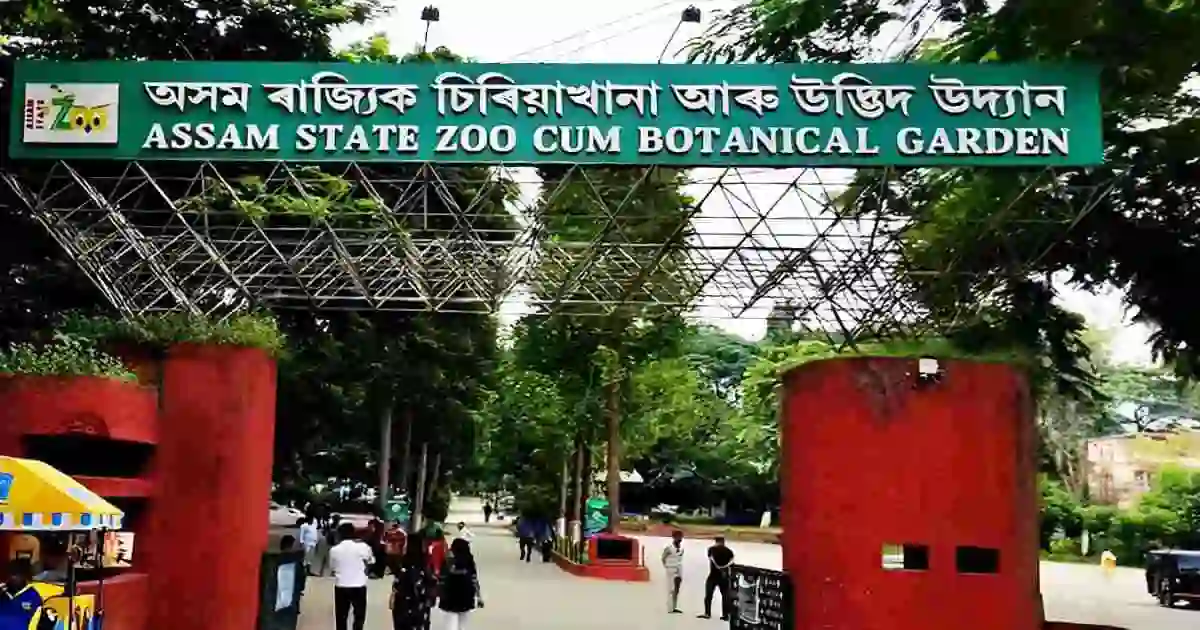
The Assam State Zoo cum Botanical Garden, commonly known as Guwahati Zoo, is spread over 175 hectares in the heart of the city. Established in 1957, it is the largest zoo in Northeast India and houses a diverse collection of animals, particularly species native to the region. The zoo plays a crucial role in wildlife conservation and education.
One of the main attractions of the zoo is its successful breeding program for the one-horned rhinoceros, Assam's state animal. Other notable inhabitants include tigers, leopards, elephants, and various primate species. The zoo also features a botanical garden with numerous indigenous plant species, creating a natural habitat for the animals.
The zoo is organized into different zones representing various ecosystems of Northeast India. Educational programs, guided tours, and conservation awareness activities make it popular among students and families. The zoo's design emphasizes natural enclosures that mimic the animals' wild habitats.
In conclusion, the Assam State Zoo cum Botanical Garden is not just a recreational space but an important institution for wildlife conservation. It offers visitors a glimpse into the rich biodiversity of Northeast India while promoting environmental awareness and conservation efforts.
Fancy Bazar is the largest and oldest commercial market in Guwahati, serving as the city's primary trading hub for centuries. Located near the Brahmaputra River, this bustling market area offers everything from traditional Assamese handicrafts to modern consumer goods, representing the economic pulse of the region.
The market gets its name from the variety of fancy or decorative items that were traditionally sold here. Today, it comprises numerous specialized sections including cloth markets, jewelry shops, electronics stores, and food stalls. The market is particularly known for its Assamese silk, especially Muga (golden silk), Pat (silver silk), and Eri (ahimsa silk).
Beyond shopping, Fancy Bazar offers a cultural experience with its narrow lanes, traditional architecture, and the vibrant mix of languages and communities. The area comes alive during festivals, especially during Durga Puja when elaborate pandals are constructed and the market stays open late into the night.
In conclusion, Fancy Bazar is more than just a market; it's the commercial and cultural heart of Guwahati. Its chaotic energy, diverse offerings, and historical significance make it an essential destination for understanding the city's economic life and cultural diversity.
Guwahati embodies the essence of Assam with its blend of ancient heritage and contemporary urban life. As the gateway to Northeast India, it offers cultural richness, historical significance, and modern amenities while maintaining connections to traditional Assamese culture. From its sacred temples to its vibrant markets, Guwahati is a city that captures the dynamic spirit of modern Assam.
Dibrugarh, known as the "Tea City of India," is a major city in Upper Assam and the headquarters of the Dibrugarh district. Located on the banks of the Brahmaputra River, it serves as the commercial center of Assam's tea industry and is surrounded by extensive tea gardens that produce some of the world's finest teas.
Dibrugarh represents the agricultural and industrial side of Assam, balancing its tea operations with access to natural beauty. As the heart of Assam's tea country, it plays a crucial role in the state's economy while offering its own attractions for visitors seeking to understand Assam beyond its urban centers.
Jorhat, the second-largest city in Assam, is considered the cultural capital of the state. Located in Upper Assam, it served as the last capital of the Ahom kingdom and continues to be a center for literature, art, and Assamese culture. Jorhat is also a major tea-growing district and an important educational hub.
Jorhat offers a glimpse into the intellectual and cultural heart of Assam, balancing commercial activity with cultural preservation. As the cultural capital of Assam, it showcases the state's heritage through its institutions, traditions, and intellectual life. For visitors seeking to understand Assam beyond its natural beauty, Jorhat provides an enriching experience of the state's cultural depth.
Sivasagar, formerly known as Rangpur, was the capital of the Ahom kingdom and remains one of the most historically significant cities in Assam. The city is named after the Sivasagar tank, a massive artificial reservoir commissioned by an Ahom queen, and is surrounded by architectural marvels from the Ahom period.
Sivasagar offers a different dimension of Assam, focused on historical heritage rather than urban development. As the former capital of the Ahom kingdom, it preserves an important aspect of Assamese history that distinguishes it from other cities. The combination of ancient monuments, engineering marvels, and cultural authenticity makes Sivasagar an essential destination for understanding Assam's royal past.
Silchar is the second-largest city in Assam and the administrative headquarters of the Cachar district. Located in the Barak Valley region of Southern Assam, it serves as the cultural and economic hub for the Bengali-speaking population of the state. Silchar's distinct cultural identity and strategic location make it an important urban center in Southern Assam.
Silchar represents the cultural diversity within Assam, where Bengali traditions coexist with Assamese influences. As the primary city of the Barak Valley, it showcases how regional identities within Assam create a rich cultural tapestry. For those seeking to understand the complete picture of Assam's diversity, Silchar provides an invaluable perspective on the state's multicultural character.
The cities of Assam each contribute uniquely to the state's character. Guwahati represents the modern gateway and administrative heart, Dibrugarh the tea industry, Jorhat the cultural and intellectual life, Sivasagar the historical heritage, and Silchar the cultural diversity of the Barak Valley. Together, these urban centers showcase the diversity that makes Assam much more than just a natural paradise—they reveal a state with rich history, vibrant culture, and multiple economic engines that balance agriculture, industry, and services. From Ahom monuments to tea gardens, from bustling markets to tranquil riverfronts, Assam's cities offer experiences that capture the essence of this unique Indian state.
Assamese food is characterized by its mild flavors, minimal use of spices, and emphasis on fresh, local ingredients. The cuisine reflects Assam's agricultural abundance, riverine resources, and cultural diversity, creating a unique culinary tradition that is both healthy and flavorful.
Masor Tenga is the quintessential Assamese dish, a light and tangy fish curry that is a staple in most households. This refreshing dish showcases the Assamese preference for subtle flavors and the use of local souring agents.
Masor Tenga is more than just a meal; it's a symbol of Assamese identity and riverine culture. Its simplicity belies the complex flavors that have evolved over centuries, making it the heart of Assamese culinary tradition.
Aloo Pitika is a simple yet flavorful mashed potato dish that exemplifies the Assamese philosophy of cooking - letting natural ingredients shine with minimal interference. This comfort food is a staple in Assamese households and showcases the region's preference for uncomplicated, wholesome dishes.
Aloo Pitika is more than just mashed potatoes; it's a culinary philosophy that celebrates simplicity and natural flavors. This humble dish represents the heart of Assamese home cooking, where minimal intervention allows the true essence of ingredients to shine through.
Pitha refers to a variety of traditional Assamese rice cakes and sweets that are an integral part of the state's culinary heritage, especially during festivals like Bihu. These delicacies showcase the creativity and skill of Assamese cooks in transforming simple ingredients into exquisite treats.
Pitha is more than just a sweet treat; it's a cultural artifact that connects modern Assamese people to their agricultural heritage. The variety and complexity of pitha preparations showcase the richness of Assamese culinary traditions and their deep connection to the land and seasons.
Spicy duck preparation cooked with traditional Assamese spices.
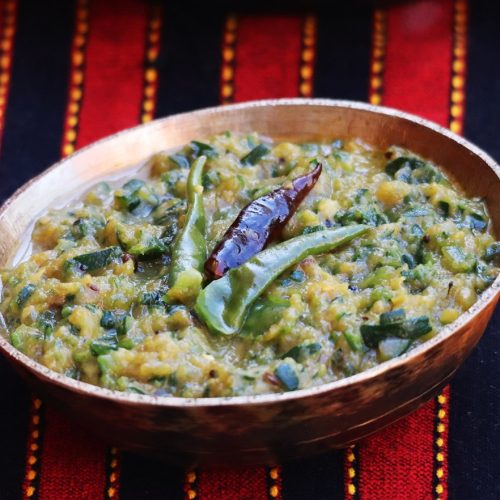
Alkaline dish made from filtered water of sun-dried banana peel ashes.
Sour fish curry made with elephant apple, a unique local ingredient.

Traditional rice beer brewed by various communities in Assam.
Assamese cuisine is a vibrant reflection of the state's natural bounty and cultural diversity. From the tangy flavors of Masor Tenga to the comforting simplicity of Aloo Pitika, and the festive sweetness of Pitha, Assamese food tells the story of a people deeply connected to their land and rivers. The cuisine's emphasis on fresh ingredients, minimal spicing, and traditional cooking methods creates a unique culinary identity that is both healthy and deeply satisfying. Each dish is not just nourishment but a celebration of Assam's rich agricultural heritage and its position as a cultural crossroads between South Asia and Southeast Asia.
Assamese fashion is a beautiful reflection of the state's diverse ethnic communities, tropical climate, and rich cultural heritage. From the elegant traditional attire worn during festivals to the practical everyday clothing suited for the humid climate, Assamese fashion represents a unique blend of functionality, aesthetics, and cultural identity.
Did you know? Assam is famous for its three types of indigenous silk - Muga (golden silk), Pat (silver silk), and Eri (ahimsa silk) - each with unique characteristics and cultural significance.
Traditional Assamese men's attire reflects the state's diverse ethnic communities and practical considerations for the tropical climate. From formal occasions to everyday wear, these garments showcase a unique cultural identity that has evolved over centuries.

Traditional Assamese men's fashion represents the state's diverse cultural heritage, with influences from various ethnic communities. The simplicity of the clothing reflects the practical needs of Assam's tropical climate, while the use of indigenous silks showcases the region's rich textile traditions.
Assamese women's traditional attire is renowned for its elegance, simplicity, and the prominent use of indigenous silks. The most distinctive feature is the two-piece ensemble called 'Mekhela Chador', which has become a symbol of Assamese cultural identity.
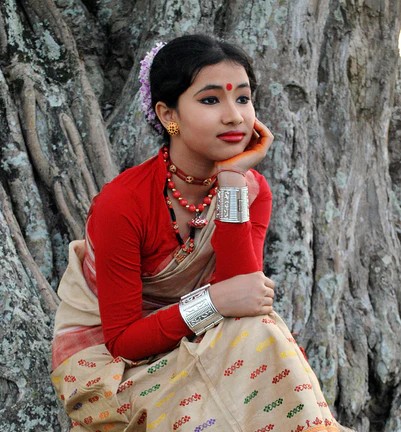

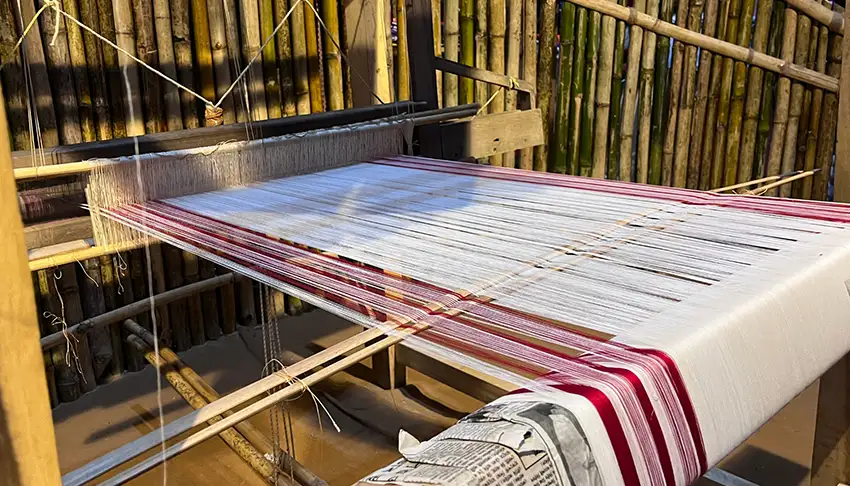
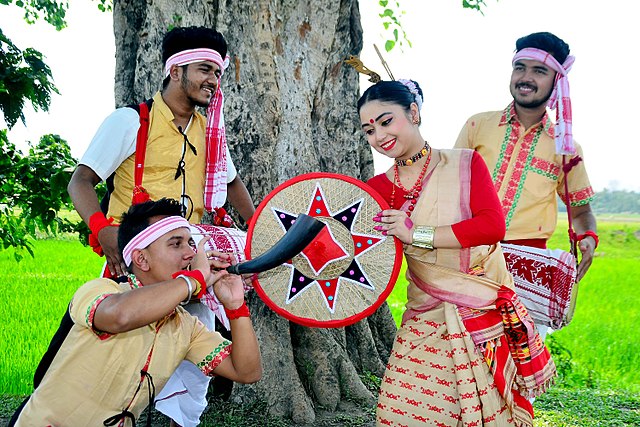
Women's fashion in Assam tells a story of cultural preservation and adaptation. The Mekhela Chador, with its distinctive draping style, has become a symbol of Assamese identity. The use of indigenous silks, particularly Muga, represents the state's unique textile heritage and the skill of its weavers. The variations in traditional attire across different communities showcase Assam's cultural diversity while maintaining a distinct regional identity.
Assam is renowned for its indigenous silk production, particularly three varieties that are unique to the region. These textiles represent centuries-old traditions and continue to be an important part of Assamese cultural and economic life.
The textile traditions of Assam have ancient roots, with references to Assamese silk in historical texts dating back to the Varman dynasty. During the Ahom period, silk production flourished and became an important part of the economy. The British colonial period saw changes in production techniques and the introduction of new designs. In the post-independence era, there has been a revival of traditional techniques alongside innovations that combine traditional motifs with contemporary designs.
Contemporary Assamese fashion represents a dynamic blend of traditional elements with global influences, shaped by urbanization, education, and increased connectivity. Modern Assamese designers are creating innovative styles that honor tradition while embracing contemporary aesthetics.
Simple cotton garments suited for the tropical climate, with distinctive draping styles evolving among different communities.
Development of silk weaving techniques and the establishment of the Mekhela Chador as the predominant women's attire.
Introduction of new textiles and influences, while traditional attire remained dominant in rural areas.
Revival of traditional textiles and emergence of Assamese designers blending tradition with modernity.
Globalization and digital connectivity accelerate fashion evolution, with Assamese fashion gaining recognition nationally and internationally.
Assam has produced several fashion designers and influencers who have gained recognition for their work that often incorporates Assamese cultural elements.
Assamese fashion is a dynamic and evolving expression of the state's unique cultural identity. Rooted in practical considerations for the tropical climate and shaped by centuries of cultural exchange, it represents a harmonious blend of tradition and innovation. From the elegant Mekhela Chador to contemporary fusion wear, Assamese clothing tells a story of cultural preservation, adaptation, and pride in heritage.
As Assam continues to navigate the intersection of tradition and modernity, its fashion scene remains a vibrant reflection of this balance. The growing recognition of Assamese textiles and designers on national and international platforms suggests an exciting future where traditional Assamese elements will continue to influence broader fashion trends while adapting to contemporary sensibilities.
Future Trends: The next decade will likely see increased emphasis on sustainable practices in silk production, technological integration in textile manufacturing, and further innovation in fusion wear that respects traditional craftsmanship while embracing global fashion currents.